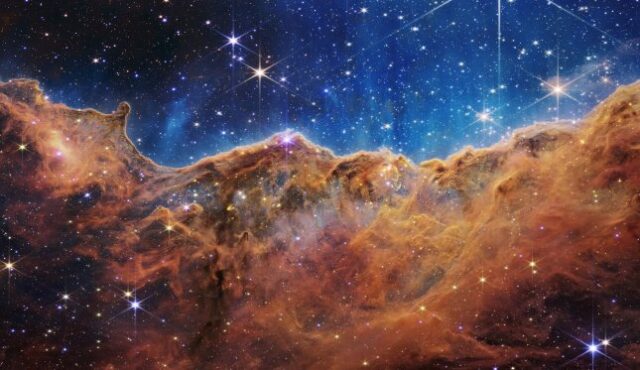July 22 (UPI) — NASA’s latest deep-space telescope continues to shock astronomers and amateurs with jaw-dropping new images captured from the outer reaches of the cosmos.
The James Webb Space Telescope appears to have pictured a wormhole spinning in the “Phantom Galaxy,” a place whose very center scientists believe may contain a black hole.
“I’ve been doing this for 10 years now, and [Webb] data is new, different and exciting,” Judy Schmidt, who processed raw data from NASA into a stunning photo of the Phantom Galaxy, told Space.com. “Of course I’m going to make something with it.”
The latest images come as the telescope — a $10 billion behemoth six times more powerful than its predecessor, the Hubble Telescope — braves the depths of space in its first series of missions.
Based on the new images, a team of scientists from the University of Manchester now believes the early universe may have included as many as 10 times more galaxies similar to ours.
One of the study’s co-authors, Professor Christopher Conselice, told the BBC the new telescope is able to show scientists the nature of objects that “we knew existed but didn’t understand how and when they formed.”
“We knew we would see things Hubble didn’t see — but in this case we’re seeing things differently,” Conselice said.
“These are the processes we need to understand if we want to understand our origins,” said Conselice, who will present his discovery Saturday in the United Kingdom. “This might be the most important telescope ever — at least since Galileo’s.”
Scientists the world over remain abuzz as they sift through piles of data coming from the Webb telescope. Two independent teams have recently said they may have found the very origins of the universe.
“This is the oldest galaxy we’ve ever seen,” tweeted Paul Byrne, an associate professor of earth and planetary science at Washington University in St. Louis, who is on one of the teams.
This is the oldest galaxy we’ve ever seen.
It was spotted with early-release #JWST NIRCam data, and is sufficiently red-shifted to have formed only 300 million years after the Big Bang-which means it’s 97.8% the age of the Universe. pic.twitter.com/9AKAVTPqix— Paul Byrne (@ThePlanetaryGuy) July 20, 2022
“It was spotted with early-release [James Webb] data, and is sufficiently red-shifted to have formed only 300 million years after the Big Bang — which means it’s 97.8% the age of the universe.”
The James Webb telescope has been transmitting images from space since early July. At 21 feet across, its primary mirrors are nearly three times larger than the Hubble, which was launched in 1990.

COMMENTS
Please let us know if you're having issues with commenting.